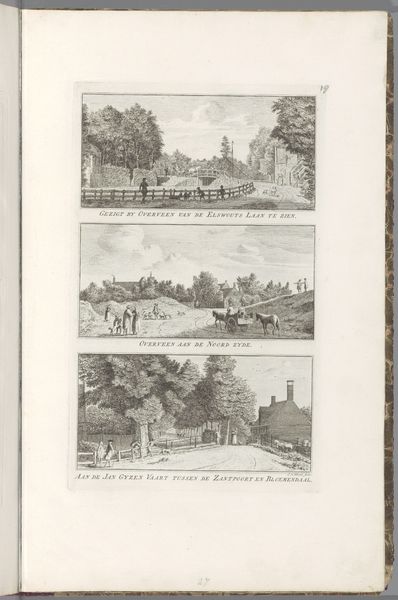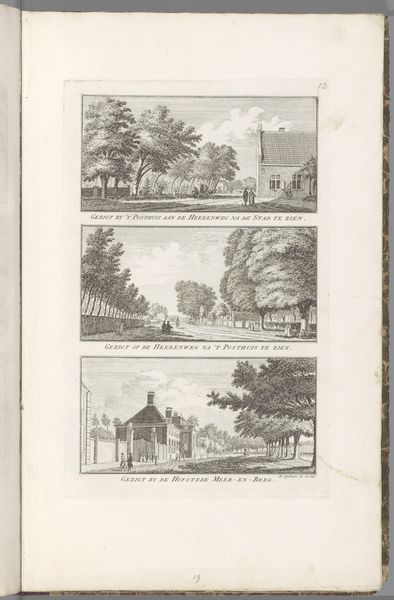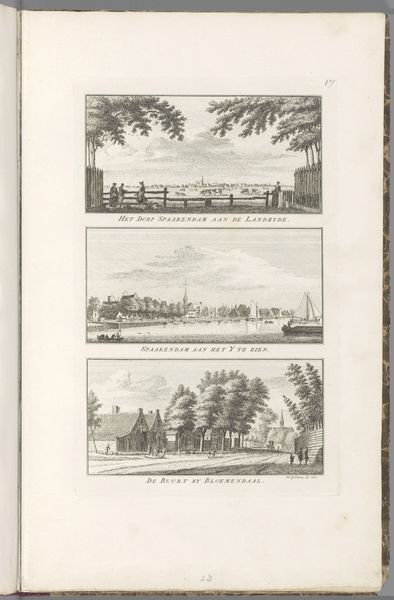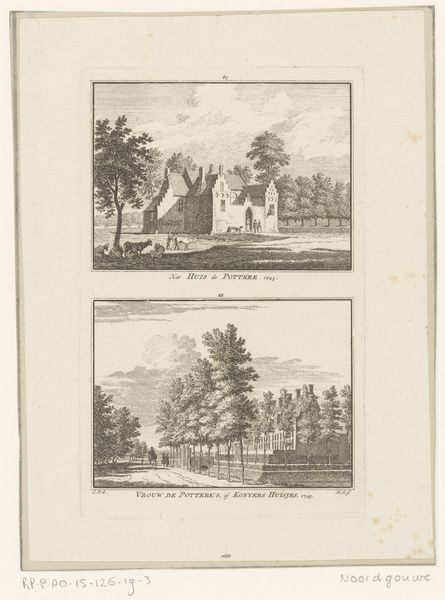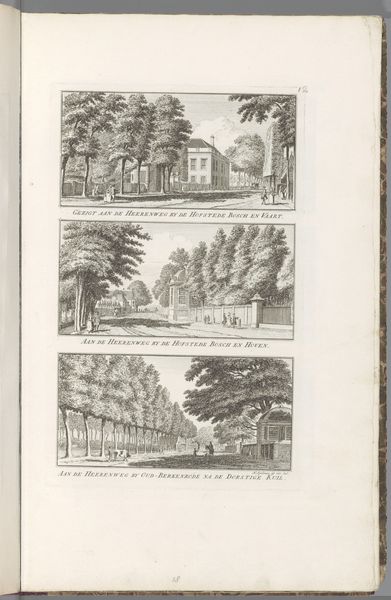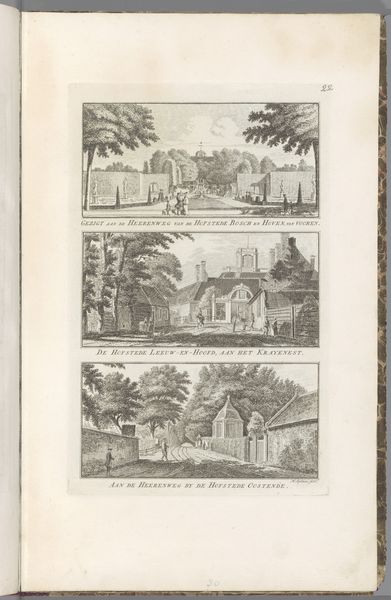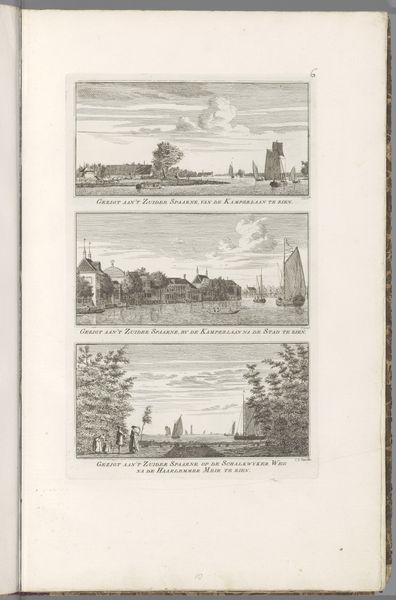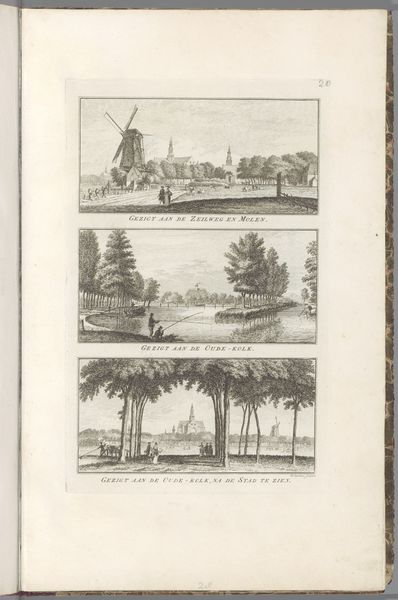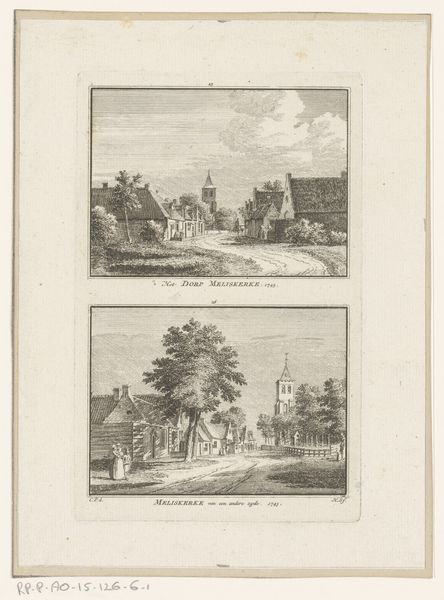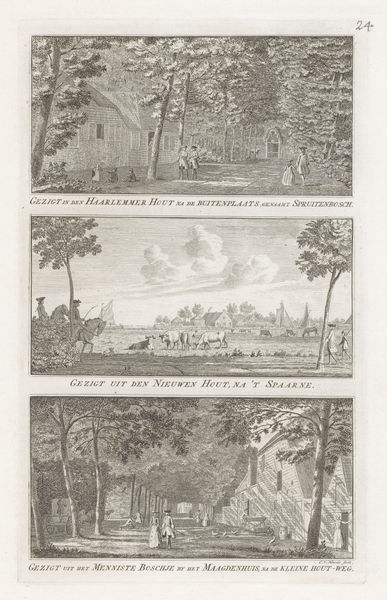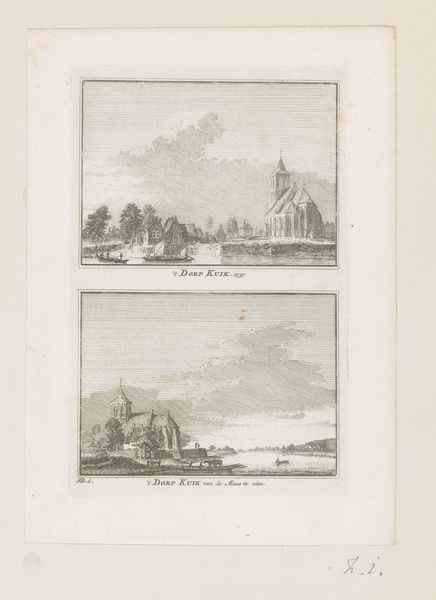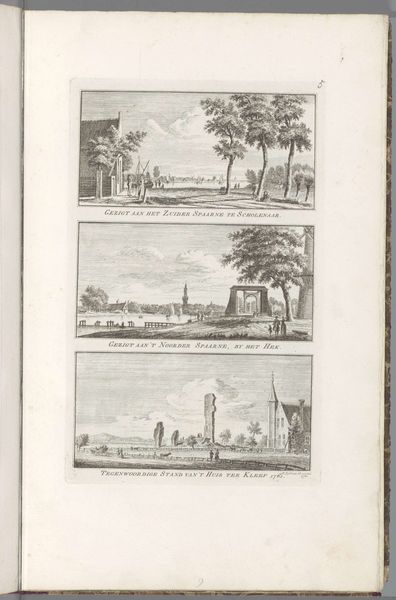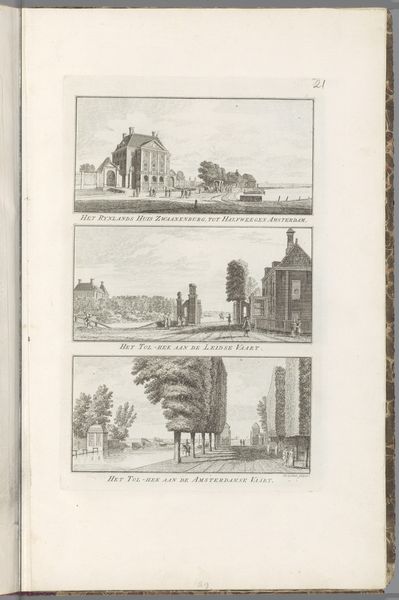
Gezichten op Gasthuislaan, Leidsevaart en Zuider Spaarne te Haarlem 1762 - 1763
0:00
0:00
cornelisvannoorde
Rijksmuseum
print, etching, engraving
#
dutch-golden-age
# print
#
etching
#
landscape
#
river
#
cityscape
#
engraving
Dimensions: height 297 mm, width 192 mm
Copyright: Rijks Museum: Open Domain
Curator: This print by Cornelis van Noorde, made around 1762-1763, presents us with three distinct views of Haarlem, specifically, along the Gasthuislaan, Leidsevaart, and Zuider Spaarne. Editor: My initial reaction is a feeling of calm observation. The intricate detail achieved through etching and engraving, capturing the Dutch landscape, evokes a very distinct mood of detached peace. Curator: Yes, and if we look closely, the placement of these views invites a certain social reading. The Gasthuislaan suggests access and the lives of those of means, as these lanes were often where such individuals resided, while the waterways speak of commerce and the working class who rely on it. The proximity of the views makes that hierarchy visible. Editor: Structurally, it's intriguing how Van Noorde uses line and shading to create depth in each scene, particularly in the trees. The composition guides the eye to wander, creating a sense of movement despite the static nature of the medium. It also showcases incredible craftsmanship in rendering a believable landscape using minimal means. Curator: It is compelling, isn't it? But beyond formal qualities, I'm struck by how these depictions function almost as cartographic tools—they are asserting dominion and understanding through visual representation, categorizing social classes within the landscape. What power does that exert, both then and now? Editor: Perhaps a touch overreaching, as I see these not as political statements, but careful studies. Van Noorde employs rigorous artistic principles, paying close attention to light, texture, and spatial relations. The overall effect is one of visual harmony and technical mastery. Curator: And yet, to disregard the socio-political context is to ignore a key dimension of artmaking in this period. Art often implicitly supported existing power structures. Van Noorde, though maybe unintentionally, reinforces societal stratification in representing specific locations. Editor: Well, I think we can both appreciate the undeniable beauty of this landscape through careful lines and thoughtful construction. Regardless of perspective, it invites prolonged viewing. Curator: Indeed. It encourages us to consider both the artistry involved and the social landscape reflected within, inviting dialogue that enriches our understanding of the work and its time.
Comments
No comments
Be the first to comment and join the conversation on the ultimate creative platform.
